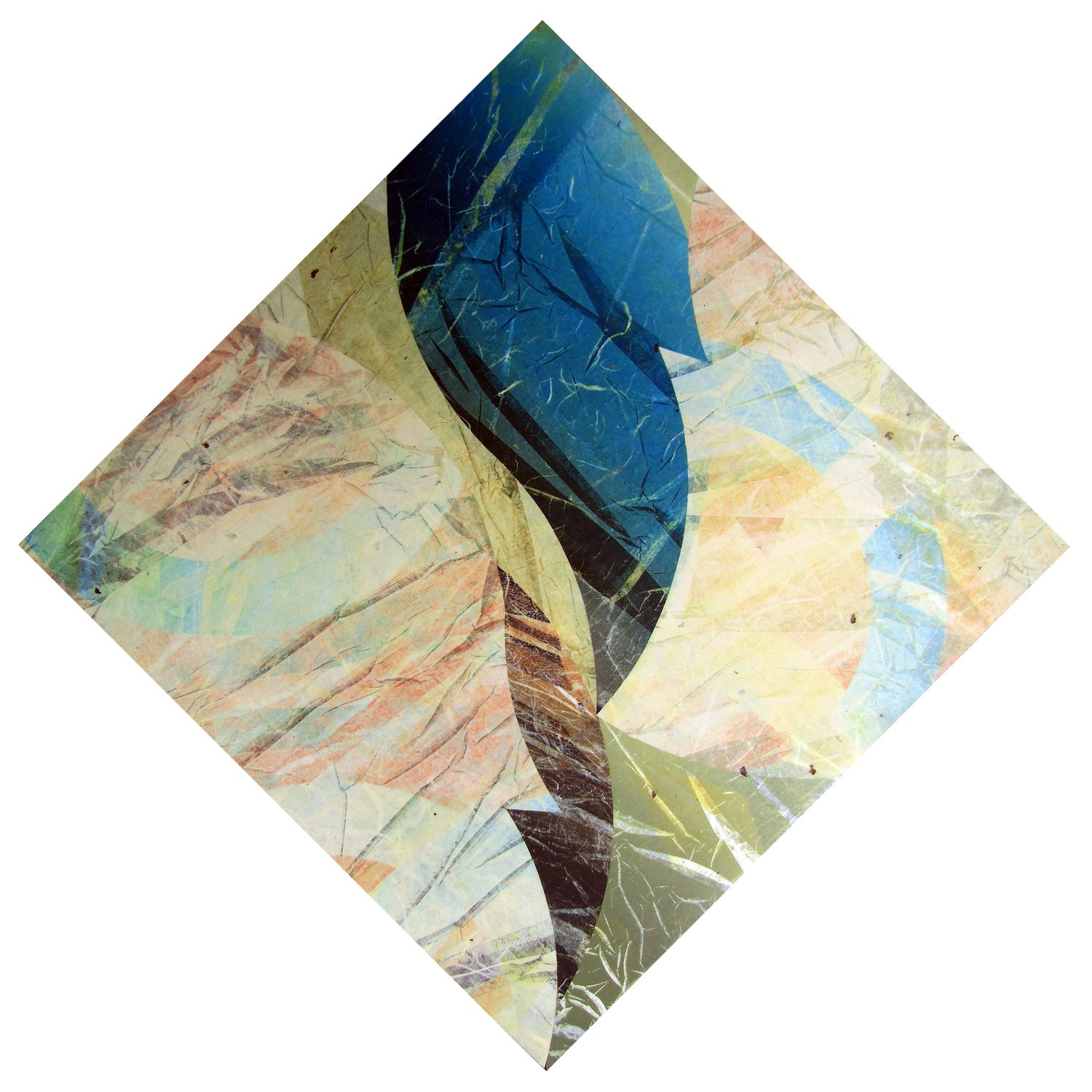Copyright 27East

Traveling abroad has a way of stirring inspiration. For Peter Solow and Scott Sandell, two Sag Harbor artists and longtime friends, a not-too-long ago trip to Italy has brought forth a burst of creativity that is now going on view in a new exhibition in Springs. The show, titled “A Field Guide to Florence,” runs November 8 and 9 at Ashawagh Hall, and the work included in it was born in the wake of a visit to the city with a group of high school students in February 2024. OvZer the years Solow, a longtime art teacher at Pierson High School, has taken countless groups of students to Florence and other European cities. But this time it was different. For one thing, Solow is now retired, so the trip wasn’t sponsored by the school itself, but rather the Reutershan Trust, a nonprofit educational initiative that offers artistic opportunities for local students beyond the classroom. And perhaps even more important, this time the trip was not about rushing to multiple cities in Italy to see as many art museums and cultural sites as possible. Instead, the focus was specifically about the students being working artists and spending as much time as possible in Florence in the studio. Another difference was the students themselves. “Most of the trips in the past have been inclusive and all were invited,” Solow explained. “Since I no longer work at the school, this was a self-selecting kind of thing. The idea for the Italian art-making adventure came after Solow and Sandell offered a three-day intensive workshop for students through the Reutershan Trust in collaboration with The Church in Sag Harbor. Based on what came out of that workshop, Sandell and Solow realized that a similar trip to Italy could be beneficial for the teens. So, they presented the concept to Pierson students in grades 10 through 12, and those who signed on did so with the understanding that this time, it would be all about their own artwork. “The trip would coincide with the school February break, but it would be one really devoted to art making,” Solow explained. “We decided it would be just one city; we would not be traveling around. We found studio space and purchased materials in Florence. “There’s a tendency of overloading everyone on these trips. We had three or four other things we were going to do, but after we got there, we realized it was just too much,” Solow added. “Just working in the studio was the central thing, with the exception of the Uffizi and a few smaller museums. You never know what’s gonna resonate with the kids and where they’re coming from.” “Typically, when you go to Florence, you see the museums and the cathedrals,” Sandell said. “The interesting thing on this trip was, once we got there the kids just wanted to go right to the studio.” “And if the kids had an observation after the fact, it was that the trip wasn’t long enough and they wished they had more time working and spent less time seeing the sights,” Solow noted. “They said, ‘We just wanna get back to the studio to paint.’” If the students found the setting of Florence an inspiration for the making of art, the same can certainly be said of Solow and Sandell as the leaders of the trip. “When you go somewhere else, it doesn’t matter if it’s Florence or Kathmandu, you see things differently and are looking all the time in a way you aren’t at home,” Sandell said. “Getting that distance is important,” Solow added. “Almost by being in that environment, everything is so new. Even for those of us who have been there multiple times, it’s so different.” As a result, all the work on view in “A Field Guide to Florence” was created after Sandell and Solow returned to the East End. But the work itself is dominated by the impressions and the experiences the two had there, beginning with the very paper upon which their artwork lives. “When we came back, we floated this idea of starting a whole new body of work,” Sandell explained. “When you think Florence, it’s got hundreds of years of texture — sandstone walls or the cobblestone underneath your feet. There’s all this texture. I thought, let’s grind up pulp and start from the bottom up.” Sandell added that when he travels, he’s not the kind of person who has to necessarily hit all the famous sites. Instead, he brings a different mentality that is more focused on impression and emotion. “I wanna lay on the grass and stare at the sky,” Sandell said. “What happens for me is, when you travel to a romantic destination — whether it’s Paris, Florence or Patchogue — you are given the opportunity to have distance on real life. What happens in our head is so much better than what happens in real life. Driving through Sag Harbor, you might see a painting on a wall through a window. A year later, you’re invited to the house and it’s not as good as it looked in the window. “If you’ve never been to Florence, are you curious about the Uffizi? Ponte Vecchio? The Duomo? Or are you really curious about how you feel and the experiences you have?” Looking to tap in on the literal textures of Florence’s ochre-colored buildings and cobblestone streets, upon his return to the U.S., Sandell created six different lots of papers with the Porridge Paper Mill in Lincoln, Nebraska — each containing a variety of pulps, surface and colors. “Each one is more textured or a different color. For each lot, I was thinking about Florence,” Sandell said. “For example, when walking to the studio, I walked by the Galileo Museum. I read his essay on comets. He’s a ‘my-way-or-the-highway’ kind of guy. So. I decided to dissect this book, literally, and cut out phrases and put it in the paper.” In that way, Galileo’s literal words from “ll Saggiatore,” his 1623 essay on comets, were added to a vat of cotton pulp and are now as part of the paper used in Sandell and Solow’s respective works. Sandell’s offerings in this show also include something he calls the “Correspondence Series.” “It’s a collage of letters, all in Italian, that were written between two priests who were discussing refugees in Libya and how the church might do work there,” said Sandell, who noted that the work is not a collaboration and that his own pieces in the show were created entirely separately from Solow’s. “Peter did his thing, and I did mine.” “Our work is very different,” added Solow. “But we have shared ideas about art that is very sympathetic. We’ve been talking about exhibiting together. After Florence, we felt the fact that we were both there and experienced that trip could be a unifying theme for an exhibition — a catalyst for that show.” For his part, Solow’s offerings in the exhibit are created from a variety of mediums, including oil on canvas, acrylic and pencil on paper and composite works made from photos, painting, drawings, monoprints and collages. But he notes that drawing is at the heart of it all. “Sometimes it’s important to remember process and the greatest tool I have is drawing,” Solow explained. “There were some things that didn’t work. You have to have that courage to move it around. “Florence was the catalyst and the excuse to do this,” Solow said. “Artists tell themselves stories to get themselves motivated to do certain things. Florence has unified my life in a funny way. My kids went to Florence, my wife and I went to Florence, I went to Florence many times. When we were looking for a way to exhibit together, Florence became the catalyst.” He notes that while Florence may be the unifier of this show, his work differs greatly from Sandell’s, as does his own perception and perspective of things and what they each experienced there. “We both brought experiences we’ve had,” he said of the process. “It took a while — three to four months — to experiment with the paper. Scott was helpful because we would run it through a press and experiment with it. “What’s exciting is it provided me a goal,” Solow added. “The fact this show is only two days is incidental. During the last one and a half years, there were times when I’d be down in the dumps. The work was costing time, energy and money — but Scott made a point. He said it’s already a success. The work we’ve been doing is really solid stuff. “One thing that attracted me to Scott as a friend and as a kindred spirit is his positive kind of problem solving and thinking outside of the box,” Solow added. “He says, ‘Let’s make things better. Let’s do something that excites us.’ It’s not only inspiring to the kids, but it’s inspiring for me. Because of my background and this belief that’s process-oriented, that’s what’s important to me about this exhibition. “It created that kind of structure to get in the studio to finish it,” he said. “I don’t know what the solution is, but I know I’ll find the solution through the process of working. What’s important is you have the courage. Don’t accept things you sense are not working. “With all the crap going on right now, there’s nothing better than being in my studio and making art,” he added. “We’re in control of it one way or another. What could be better than making stuff and striving to make the world a more beautiful and better place? And to have a voice. “That’s what being human is all about.” “A Field Guide to Florence” by Scott Sandell and Peter Solow opens with a reception on Saturday, November 9, from 5 to 7 p.m. The work will also be on view on Sunday, November 9, from 11 a.m. to 4 p.m. Ashawagh Hall is at 780 Springs-Fireplace Road in Springs.



